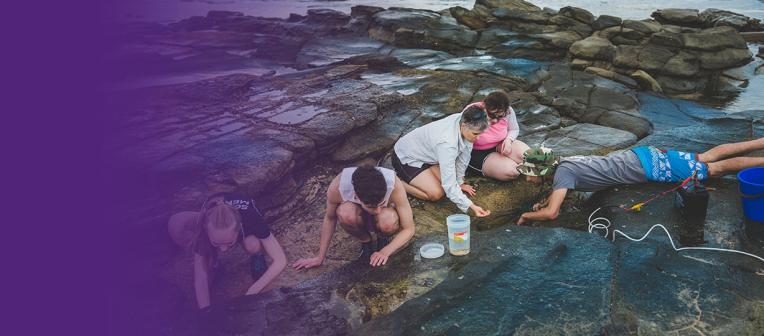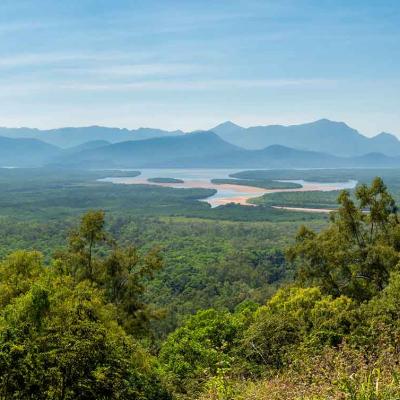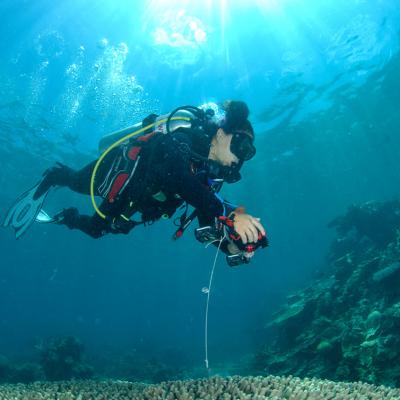Interested in careers in conservation science but unsure if pursuing a postgraduate environmental conservation degree aligns with your goals? Here's why you should seriously consider it.
Entering the field of conservation science opens a world of expanding job opportunities while allowing you to actively contribute to safeguarding our planet and its diverse life forms. By dedicating yourself to a career in conservation, you can make a meaningful impact on a global scale.
There's a growing demand for passionate professionals who are committed to addressing urgent environmental challenges, including:
- mitigating climate change
- effectively managing ecosystems
- ensuring access to clean water and sustainable food sources to safeguard global biodiversity
- protecting the world's biological diversity.
Let’s take a closer look at a few of the exciting conservation projects happening at UQ to help you get a better idea of the work you could be doing in this area.
Discovering new species
James Tweed, a PhD candidate from UQ’s School of the Environment recently discovered a new species of beetle while on a camping trip in the Gold Coast hinterland.
The newly named Excastra albopilosa is a species of fluffy longhorn beetle.
“Measuring 9.7 millimetres, it was a striking red and black beauty covered in long white hairs,” James says, recounting the first sighting.
But it wasn’t until he enlisted the help of the wider scientific community that James realised he had, in fact, found an entirely new genus (family of species) as well. After sparking much debate from insect enthusiasts on social media, it was the Australian National Insect Collection (ANIC) in Canberra that confirmed the remarkable discovery.
This chance sighting from James has led to countless media opportunities and he has also published a scientific paper on his discovery. He says the most important takeaway from the experience, however, is acknowledging just how many species could be out there that we don’t know about.
“We’re experiencing rapid declines in biodiversity globally, and it’s difficult to conserve species if we don’t even know they exist,” he says.
“Best estimates suggest there may be 5.5 million insect species worldwide and only one-fifth of these have been named and described.”
James attributes this partly to the fact that insects are often underappreciated and understudied. It can be difficult for them to encourage the type of attention their cuter and larger endangered counterparts (like koalas or whales) receive.
Environmental conservation studies can lead to fascinating research careers that involve working with underrepresented species to gain a deeper understanding of their importance in our ecosystems.
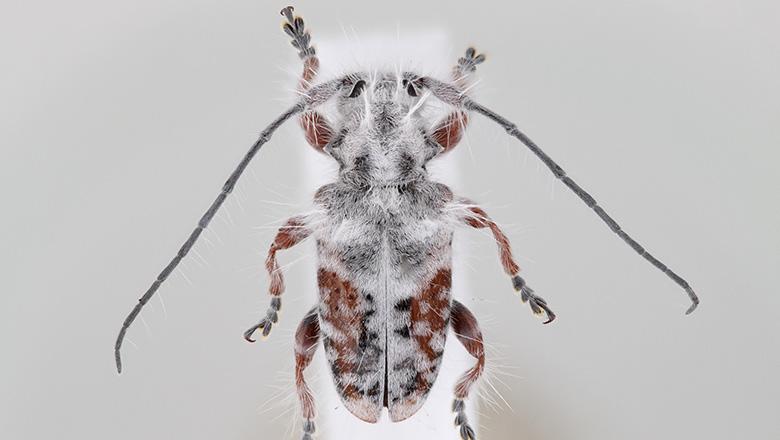
Saving our coral reefs
Coral-eating crown-of-thorns starfish (COTS) are the villains of the Great Barrier Reef. Full-sized COTS can grow up to 80cm in diameter and have hundreds of toxin-tipped thorns. They feed on hard corals and can consume up to 10 metres squared of coral a year.
The even worse news? They’re very adept at reproducing, so we need to keep their population under wraps, and quickly, before they destroy our reefs.
The good news is that UQ scientists have found a hard-working natural predator with an insatiable appetite for COTS – the red decorator crab.
After extensively testing more than 100 species of sea life including shrimps, worms and snails, Amelia Desbiens discovered it was the red decorator crab that was hungriest for juvenile COTS.
“We were surprised by its voracity - each red decorator crab devoured more than five COTS per day while most other species barely ate a single one,” she says.
She thinks they can be used to contain COTS populations and prevent future outbreaks. The trick is to get the crabs gobbling up COTS in coral environments early, before they have a chance to mature and reproduce.
“Few animals successfully eat adult COTS, but they are vulnerable when young because they are small and lack toxic spines to defend themselves.”
Utilising a natural predator to combat COTS is looking positive for the future of our reef.
An environmental conservation degree will help you understand the challenges our important, heritage-listed ecosystems face and prepare you for a career that focuses on finding solutions to help protect them.
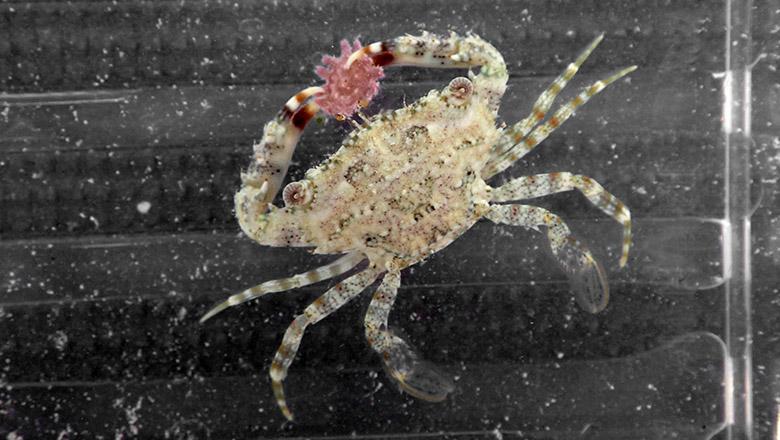
Protecting biodiversity
In some regions, it can be very difficult to collect biodiversity information to inform conservation efforts. But Dr Shawan Chowdhury thinks social media could help.
Facebook is a goldmine for nature photography. Photography groups share snaps of animals, insects and birds every day, some of which are endangered.
Shawan decided to put his team of researchers to work scouring these images in specific geographic Facebook groups to help improve habitat monitoring in Bangladesh and push for more of the land to be protected.
“We found 44,000 photos of almost 1,000 animal species, including many birds and insects, 288 of which are considered threatened in Bangladesh,” he says.
Noting where the photos were taken, Shawan and his team were able to map where the endangered species where residing.
“We identified many more high-priority areas for conservation, spanning 4,000 square kilometres for birds and 10,000 square kilometres for butterflies.
While the process was undoubtedly time-consuming, as it all had to be done manually, Shawan says the results are incredibly valuable for conservation efforts.
UQ academics believe there are big opportunities for social media companies to play a vital role in biodiversity conservation. Their hope is for this research to inspire further development of technology such as an app that can transfer biodiversity data posted on Facebook to global biodiversity databases so scientists can easily utilise it.
Careers in conservation science can take you down interesting and unexpected paths. As technology progresses, so too do scientific methods, and studying environmental conservation will help you understand the technological changes on the horizon, and how we can use them to our advantage.
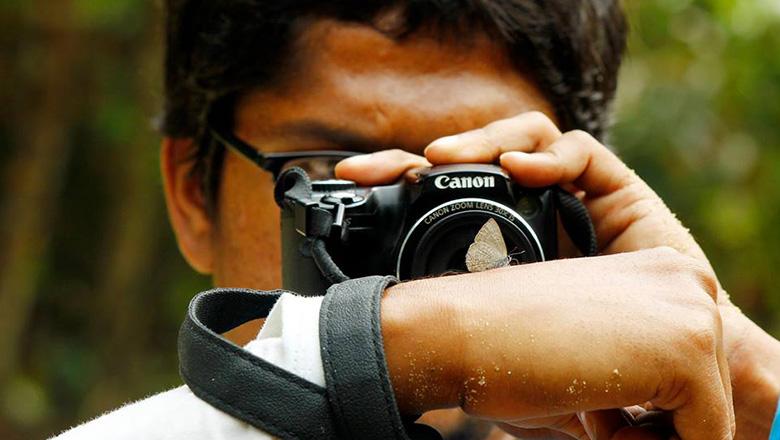
Why study environmental conservation at UQ? Conservation science attempts to secure the world's biological diversity – our flora and fauna, their evolutionary potential, and the ecosystem services they provide. That biodiversity underpins human wellbeing in many ways – from art and culture to food security. The science of conservation is changing very fast, and paradigms of conservation practice are being continuously overhauled.
Studying conservation science at UQ is your gateway to a meaningful career in safeguarding our planet. UQ’s dynamic conservation science programs equip you with the knowledge and skills needed to address pressing environmental challenges head-on. Our world-renowned faculty and state-of-the-art facilities ensure you receive top-tier education and hands-on experience in conservation research and practice. From tackling climate change to preserving biodiversity, you'll be at the forefront of global efforts to create a sustainable future.
Explore UQ's Master of Conservation Biology and Master of Conservation Science.

